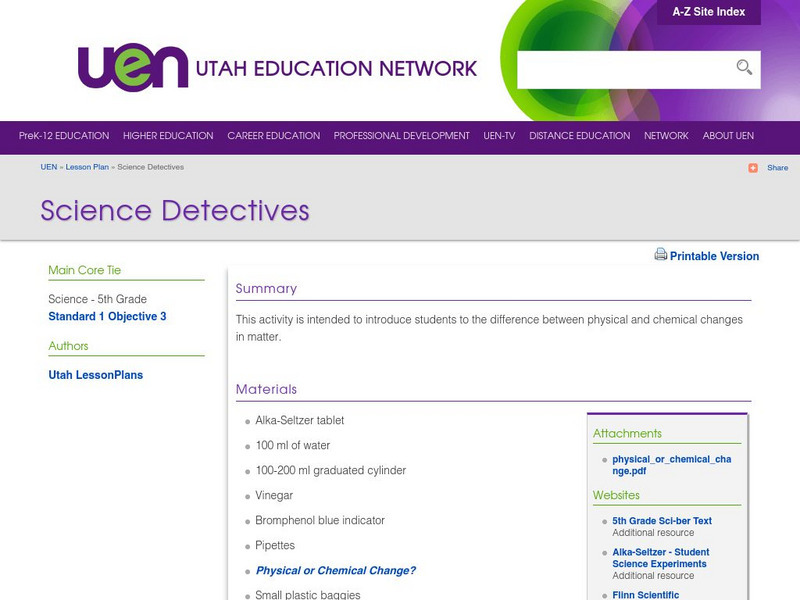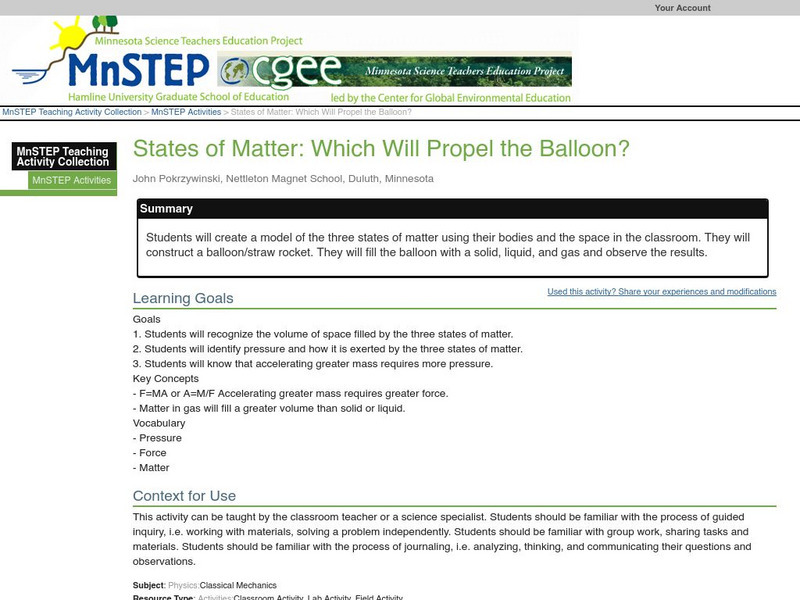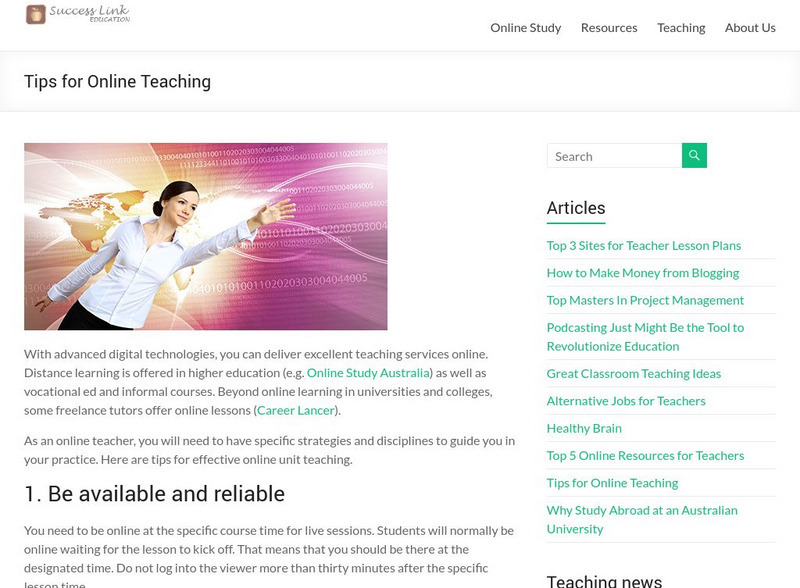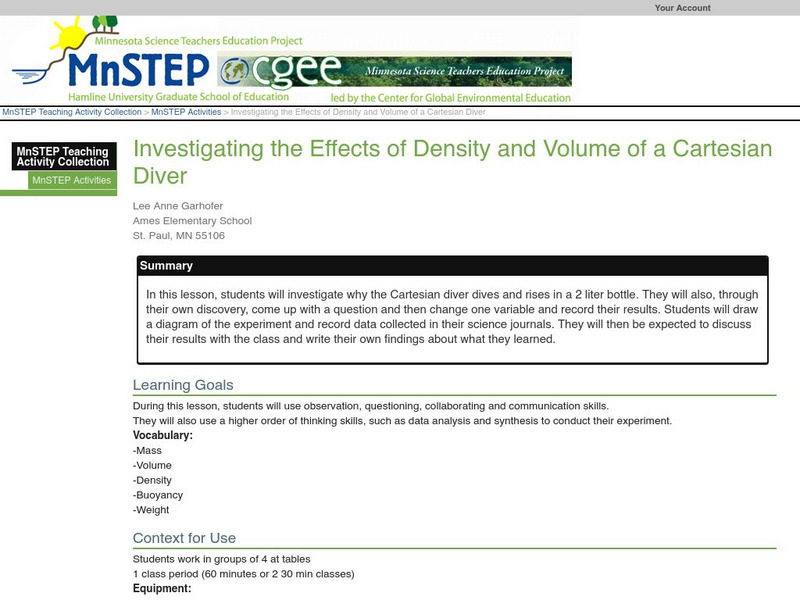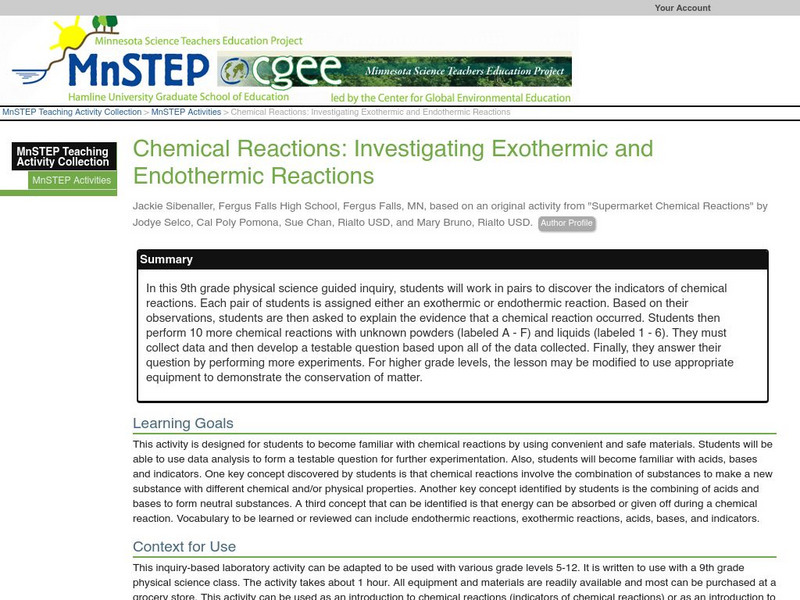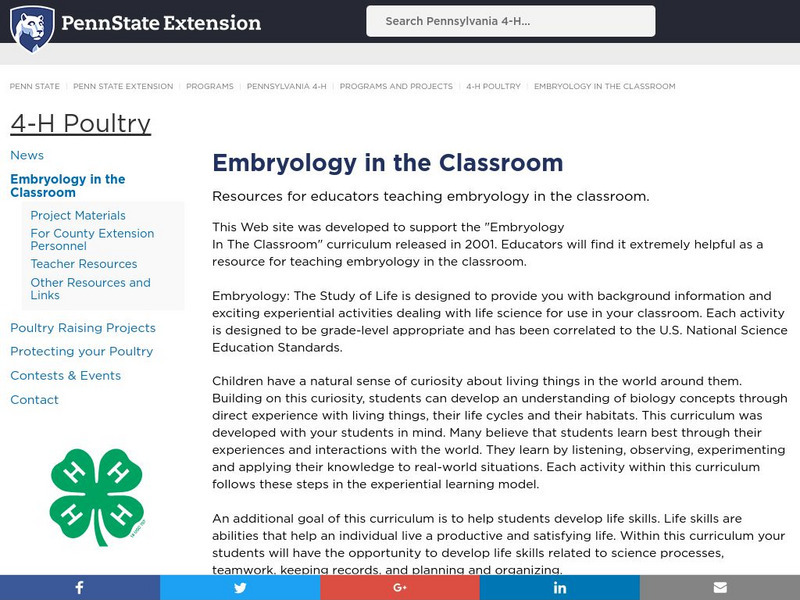Curated OER
Exploring the Celestial Neighborhood
Ninth graders study the origin and organization of the solar system. They investigate the Earth's place in the system and how planetary motions explain natural phenomena observable from Earth.
Curated OER
Opportunity and Danger
Students examine the Immigration Acts of 1862 and 1865. They discover how Chinese immigrants faced prejudice. They interview a first or second generation immigrant.
Curated OER
Taking Risks: Drug and Alcohol Abuse
Students discuss a video about drug and alcohol abuse and their connection to risk-taking. They answer questions on a risk factor sheet about the use of tobacco, drugs, and alcohol. They discuss long and short term goals and how not...
Curated OER
Calculating the Average Mass of the Newly Discovered Element: Bean
Learners determine the average mass of a new element using masses from three isotopes. For this chemistry lesson, students explain what an isotope is. They discuss their importance and uses.
Curated OER
How Can You Study Things You Can’t See Like: Atoms?
Students simulate how scientists studied things they can't see like atoms. In this chemistry lesson, students predict what is inside the numbered obsertainers. They design a way to investigate what's inside without opening it.
Curated OER
Hoosier Artists
Students examine the paintings of various Indiana artists. Using the internet, they relate the landscapes shown to the history of the state and how it affected Native Americans. Using the information they gathered, they write story...
Utah Education Network
Uen: Science Detectives
Students are given a scenario for this lesson where they must use investigative skills like a detective would to decide whether changes that happen to objects in the story are physical or chemical. They then conduct an experiment with...
Alabama Learning Exchange
Alex: What's the Matter: A Sinker or Floater?
Students will explore matter that sinks or floats when submerged in water and that matter is categorized as either a sinker or a floater. Students will work actively in small, cooperative learning groups as well as gather in a whole...
Science Education Resource Center at Carleton College
Serc: Mn Step: States of Matter: Which Will Propel the Balloon?
For this activity, students take part in a simulation of the three states of matter where they role play being molecules. They then create simple balloon rockets and must explain why a gas is the only state of matter that can cause the...
Success Link
Success Link: Dry Ice Lab/demonstration How Cool It Is!
A lesson plan using dry ice to show the four states of matter. Included are inquiry-based questions to use as part of the demonstration.
Science Education Resource Center at Carleton College
Serc: Investigating the Effects of Density and Volume of a Cartesian Diver
In this lesson, students will investigate why the Cartesian diver dives and rises in a 2 liter bottle. They will also, through their own discovery, come up with a question and then change one variable and record their results. Students...
Utah Education Network
Uen: Physical Changes
Second graders explore the concept of law of conservation of mass.
Alabama Learning Exchange
Alex: Bubble Bubble
This lesson will help young students understand the shape and movement of bubbles. Students will predict, practice, and record results as they blow bubbles with different-shaped objects.
Science and Mathematics Initiative for Learning Enhancement (SMILE)
Smile: Electrostatics
From the Science and Mathematics Initiative for Learning Enhancement project at the Illinois Institute of Technology. A teacher lesson plan which includes several Van de Graaff generator demonstrations and some station-style labs....
Science Education Resource Center at Carleton College
Serc: Chemical Reactions: Investigating Exothermic and Endothermic Reactions
In this 9th grade physical science guided inquiry, students will work in pairs to discover the indicators of chemical reactions. Each pair of students is assigned either an exothermic or endothermic reaction. Based on their observations,...
Pennsylvania State University
Penn State University: Embryology in the Classroom
Come and learn more about how to incorporate embryology into your classroom. This site features tons of information about the embryology of chickens.






